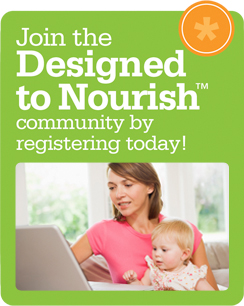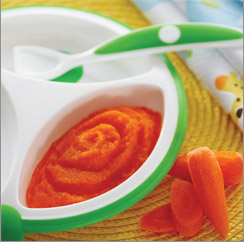Feeding Tips

Choosing healthy foods for your child now will help to establish healthy habits and preferences that will last a lifetime. There’s no question that introducing solid food to your child is a huge milestone, but there are lots of questions and controversy that surround the best way to do it. Don’t worry – your child will give cues about what’s working and what’s not. Here are a few things to watch for and consider:
- Gauge food sensitivities and allergies by introducing one food at a time to your infant, spacing them out two to three days apart.
- Always reheat frozen foods until they are very hot, and then allow them to cool to a temperature that is appropriate for your baby.
- Telltale signs that your infant has finished eating include swatting at her spoon, turning her head away from the spoon, and pursing her lips tightly as the spoon draws near.
- Self-feeding encourages the development of baby’s fine motor skills, so be patient and let your little one give it a try. It will be slow-going at first, but it will provide your child with a great sense of independence and accomplishment. Just be there for baby when the line from fun to frustration is crossed.
- Using appropriately sized dishes and utensils will allow toddlers to become familiar with their new eating skills and helps to develop healthful eating habits.
- Practicing drinking with a training cup will help improve feeding skills. To introduce the training cup to your child, let her get used to it just by holding it and playing with it. Show her how to drink with it, but don’t worry if she doesn’t catch on right away. Infants typically hit this milestone between 6 and 10 months.
- Don’t give up on the green beans! It may take 5 to 10 offerings before acceptance. Also, growth spurts, painful teething and illnesses all can contribute to picky eating habits.

